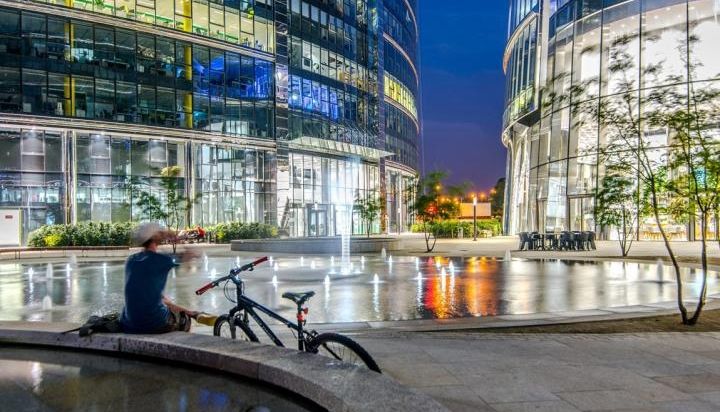Threat of “Retail Apocalypse”. Not as Black as it is Painted
The “retail apocalypse” wave across the pond claims more and more victims. Economists and analysts warn that the effects of changes will sooner or later start to affect the Old Continent, and thus also Poland. If we look at numbers, the phenomenon indeed appears to be very dangerous. However, when we try to assess the risk also through the prism of cultural conditions, we can hope that in Poland the apocalypse, like the last global recession, will not happen at all. The Polish economy, as a green island, is still very good.
Where does this optimism come from? In our country, going shopping is a kind of generational entertainment, a way to spend free time. For years, among the sellers, there is a term for a certain group of clients called the “Apache village”. It came from the part of consumers who, when asked Can I help you?, answer No, I’m just looking – in Polish: a, paczę tylko [a pache tylko]. But joking aside, this phenomenon is explored, described, and one way to use this trend are the steps taken by the market. Shopping centres invest in entertainment. What’s more, it turns out that you can attract customers even on Sundays on which trading is banned, as evidenced by the actions of one of the shopping centres in Kielce. Large shopping centres and smaller retail parks adapt to the needs of both tenants and consumers, proposing new solutions to “spend time”, while shopping is done just on the occasion. Therefore, while observing the situation in the West, we have time to prepare ourselves and quickly take steps to minimise the threat.
Analyses and opinions about the phenomenon of the retail apocalypse mention examples of the problems of Polish retail chains, such as Alma or Bomi. Here, it should be clearly stated that the main source of trouble is the advantage and strong competition from Lidl or Biedronka. Both retail chains are dynamically developing and planning to open further stores. In Poland, we still have an unsaturated market, especially in smaller towns. Here, the expansion is just beginning; next to food discount stores, small retail parks are being built, and the tenants include, for example, home appliances stores or drugstores of well-known brands. And most often, these are the first objects of these chains in the area, which pleases customers who did not have access to such an offer before.
Cautious optimism lets us to believe that e-commerce will not be a threat to the food industry at all, but it will only complement the offer and increase customer brand loyalty. Tesco’s grocery shopping with home delivery has not revolutionised the market. Lidl does not sell food products at all in its e-store. Clothing shops offering products online also do not completely give up their stationary stores – still many buyers go to them, even if only to try clothes on, check their quality, and then possibly look for “products at discount prices” on the Internet. After all, the senses play an important role in the previously mentioned grocery shopping, for example in the case of vegetables. This cannot be replaced by any technology.
Going shopping is one of the forms of spending free time, but not among Americans. Their specific habit of convenience indeed affects the strong development of e-stores and reinforces the phenomenon of the apocalypse. It’s hard not to agree with these arguments. The real frenzy of e-shopping prevails in Asia. In Japan or Korea, there is a solution that for us still sounds like science fiction – people work there 15 hours a day, so in order to save time, they created walls in the subway with photographs of products. Moving around, you can take photos with an application and, in this way, form a basket of products and order goods that are delivered to the door before you arrive home. However, in order for the system to function, products must be transported from a place close to the recipients to arrive on time, therefore, the commercial space is necessary in a large number of points.
Analysing the phenomenon and preparing a “rescue plan” (already now, although Polish entrepreneurs and economists still have time), it is also necessary to pay attention to the life stages of the “product” which is the rental park, on the example of the USA: the facilities are transformed into restaurant complexes, and smaller retail and service premises for smaller businesses into offices. There are many proven solutions, and everything is a matter of an idea. In Germany, for example, service centres are created, where instead of stores, tailor’s, locksmith’s or shoemaker’s points operate on a shared surface.
In the end, a good sign for the Polish retail market is also high demand from foreign professional entities from Europe, the United States and Asia, which proves the potential and stable forecasts for a period of 15 or even 20 years.
Back




